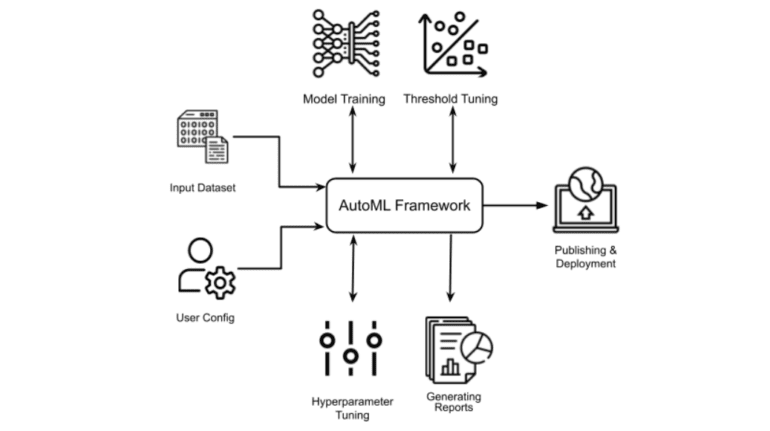TL;DR:
- LinkedIn introduced Automated Machine Learning (AutoML) for content moderation.
- AutoML streamlines machine learning processes, reducing development time.
- It automates tasks like data processing and model selection, saving time and reducing errors.
- AutoML ensures consistency, reliability, and continual learning in content moderation.
- The framework signifies a shift towards more efficient and adaptive content moderation strategies.
Main AI News:
In the realm of content moderation on the LinkedIn platform, staying one step ahead of evolving threats has always been a formidable challenge. Traditionally, this task has demanded significant manual intervention and prolonged development cycles. However, a revolutionary solution has emerged in the form of Automated Machine Learning (AutoML) to address these pressing concerns.
AutoML presents a comprehensive framework designed specifically for the automation of the machine learning process, with a primary focus on content moderation classifiers. Instead of relying on groundbreaking algorithmic changes, AutoML places its emphasis on continual learning and iterative enhancements. By automating repetitive tasks such as data processing, model selection, and hyperparameter tuning, it streamlines the content moderation classifier development process, significantly reducing the time investment required for model development and retraining.
One of the significant advantages offered by AutoML is its ability to handle redundant tasks efficiently. This, in turn, allows human resources to redirect their efforts toward more innovative endeavors. The framework also ensures standardization and consistency in model development, reducing the risk of human errors and enhancing overall reliability. AutoML’s systematic exploration of diverse approaches enables the discovery of optimal model architectures and hyperparameters, resulting in improved accuracy. Furthermore, it facilitates continual learning by automatically retraining on the latest data, a critical factor in staying ahead of emerging threats.
The proposed AutoML solution represents a transformative approach that not only automates various aspects of the machine learning process but also significantly enhances efficiency, standardization, and adaptability. By prioritizing continual learning, it ensures that content moderation systems remain ahead of the curve in the face of evolving threats. While scalability, optimization, and usability challenges are recognized, the overall impact of AutoML on accelerating model development and enhancing accuracy is truly commendable. This innovative framework marks a paradigm shift towards more efficient and adaptive content moderation strategies, ushering in a new era of digital safety and security on the LinkedIn platform.
Conclusion:
LinkedIn’s adoption of AutoML for content moderation represents a significant leap in efficiency and adaptability. By automating key processes and emphasizing continual learning, LinkedIn is poised to stay ahead of emerging threats in the market, ensuring a safer and more secure platform for its users. This innovative approach sets a precedent for the industry, highlighting the importance of automation and machine learning in content moderation strategies.

